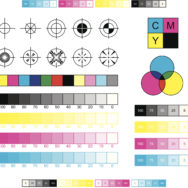Choosing a Magazine Printer: 11 Tips for Success
Posted on Mar 7, 2017 in Design/Publishing/Trends

We have clients who ask us printing questions daily. Fielding those print questions is a big part of what I do. What’s a good way to emphasize a special section? How do we work with an advertiser to include a gate-fold ad? Can we move the mailing label on the magazine?
We like to be in the know when it comes to innovative processes, responsive pre-press and proofing software, postage changes and mailing suggestions, as well as special print services like blow-in cards and polybagging. What are the costs and benefits of each of these offerings? How can these services create value, efficiencies and savings?
Publishing Executive published a terrific article, “10 Tips for Choosing a Magazine Printer,” that makes some great points—well, 10 actually!
One question I am asked often: Isn’t it better to use a local printer? Sure, I love to eat local, shop local for home goods and fresh food, and support local business, but you’re looking for the best fit for your publication first and foremost. The printer who offers exactly what you need might not be down the street. In the writer’s Tip #6, he adds, “an out-of-town printer with a good logistics operation might not be at a disadvantage and may offer strengths that the locals don’t have.” Which leads me to Tip #7. You know your publication. You know it well. If you print 5,000 copies quarterly, you may want to rethink going with the largest printer in the nation printing hundreds of thousands of copies for Vanity Fair monthly. Small fish, big pond. A niche printer who specializes in short-run publications might be a better fit.
Paper. There is a world of difference in paper and even at the same weight and specification, the opaqueness, feel and brightness can vary. As in Tip #8, ask your potential printer for paper recommendations based on what you want to achieve. Is the color of the paper the most important factor (think architecture versus people on a scale from warm whites to cool whites)? The paper weight, cost and availability can affect your best option. Get samples. Provide a print file and ask for a test print on the paper you are considering. Work with your printer to find your ideal paper for budget and beauty.
And then there’s postage—Tip #9. Printers who specialize in magazines and publications usually have a postage specialist on staff who can provide guidance and ideas for cost efficiency in mailing periodicals. From paper weight to co-mailing, there are ways to improve your bottom line. And the USPS guidelines for periodicals can be challenging to understand and comply with, so an in-house expert is duly helpful!
And finally, I’ll add my own tip: Examine Your Proofing Process. Each of our clients has a different proofing process. You may have one you’re comfortable with. But, comfort can come at a cost! Ask your printer how you can save money and time by adapting your proofing process. Soft-proof first if copyediting is part of your print process; hard-proof second for color and other issues, such as checking bleeds and pagination. Ask your printer if they time stamp proofs. This can be extremely helpful when replacing pages and checking final proofs. Some printers use proprietary software for approvals that time stamp your approvals, plus allow for comments. It’s all about efficiency and what works for your team.
Shopping for printers can be overwhelming, but investing the time to find the right printer will pay off. Prioritize your needs and start with printers who specialize in producing magazines. Have each printer bid on your last issue using it as a guide so you can compare apples to apples. Then use this list of tips to ask the pointed questions that will help direct you to your ideal printing partner.
— Andrea Exter, CEO and Cofounder of Monarch Media


